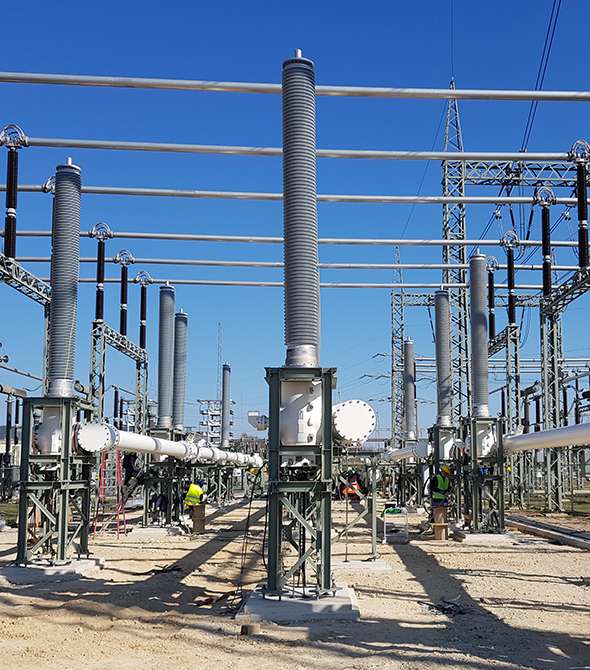Gas-insulated bushings by PFISTERER are proven technology for single-pole outdoor connections from gas-insulated switchgear (GIS) to air-insulated switchgear and overhead lines. Customers and OEMs around the world value the reliability and economy of our customised and innovative complete solutions. These provide the basis for successful, long-lasting and cost-effective projects.
Quality with full service
The key features of our bushings are their hollow core silicone or ceramic insulators, and the know-how that results from decades of application experience. At PFISTERER, our range of services covers everything from consultation, to development and simulation, to production and testing for each individual bushing in accordance with applicable IEC standards and customer specifications. Testing is carried out exclusively by our in-house laboratories – including the High Voltage Lab in Selb/Germany, which is unique in Europe and has been refurbished with state-of-the-art equipment. Together with our customers, we are also developing novel solutions using alternative, future-oriented insulating media.
